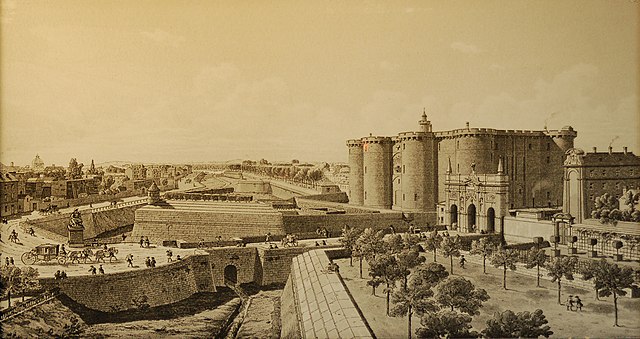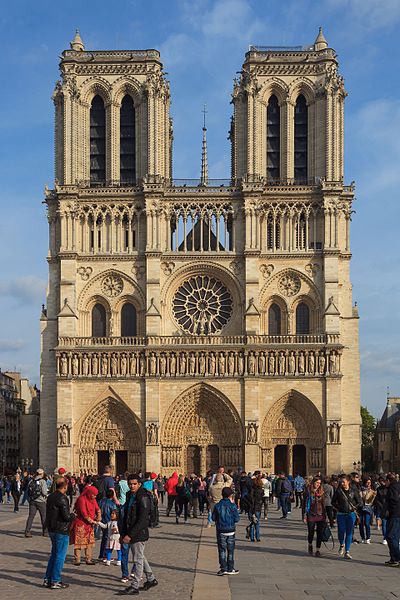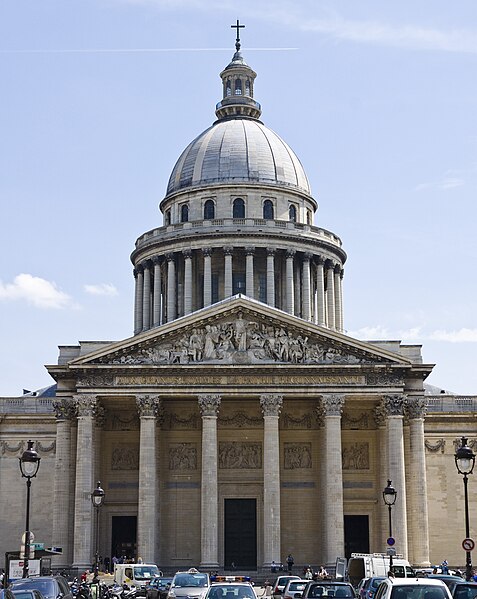The Storming of the Bastille occurred in Paris, France, on 14 July 1789, when revolutionary insurgents attempted to storm and seize control of the medieval armoury, fortress and political prison known as the Bastille. After four hours of fighting and 94 deaths the insurgents were able to enter the Bastille. The governor de Launay and several members of the garrison were killed after surrender. The Bastille then represented royal authority in the centre of Paris. The prison contained only seven inmates at the time of its storming and was already scheduled for demolition, but was seen by the revolutionaries as a symbol of the monarchy's abuse of power. Its fall was the flashpoint of the French Revolution.
Storming of The Bastille, Jean-Pierre Houël
Jacques Necker (1732–1804), French minister of finance
The Bastille of Paris before the Revolution
People in the Castle of Bastille, (Musée de la Révolution française).
Paris is the capital and most populous city of France. With an official estimated population of 2,102,650 residents as of 1 January 2023 in an area of more than 105 km2 (41 sq mi), Paris is the fourth-most populated city in the European Union and the 30th most densely populated city in the world in 2022. Since the 17th century, Paris has been one of the world's major centres of finance, diplomacy, commerce, culture, fashion, and gastronomy. For its leading role in the arts and sciences, as well as its early and extensive system of street lighting, in the 19th century, it became known as the City of Light.
Image: La Tour Eiffel vue de la Tour Saint Jacques, Paris août 2014 (2)
Image: 04 2017. Notre Dame de Paris 71
Image: Basilique du Sacré Cœur de Montmartre, Paris 18e 140223 2
Image: Paris Pantheon Facade








